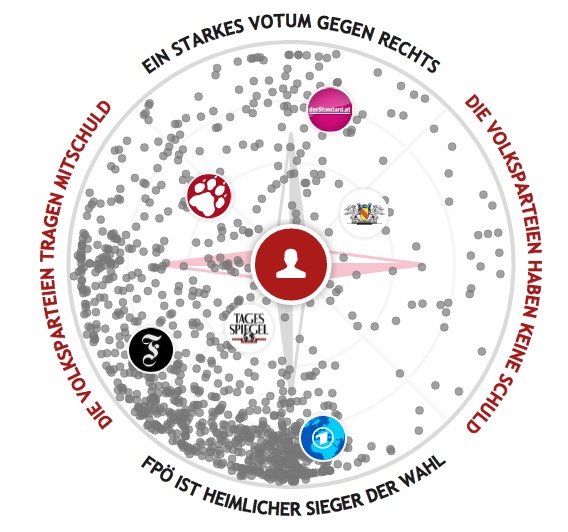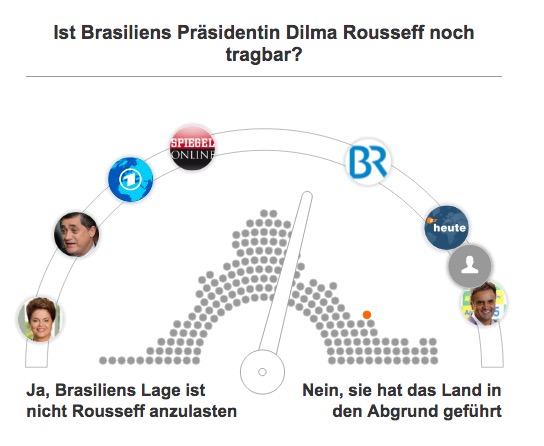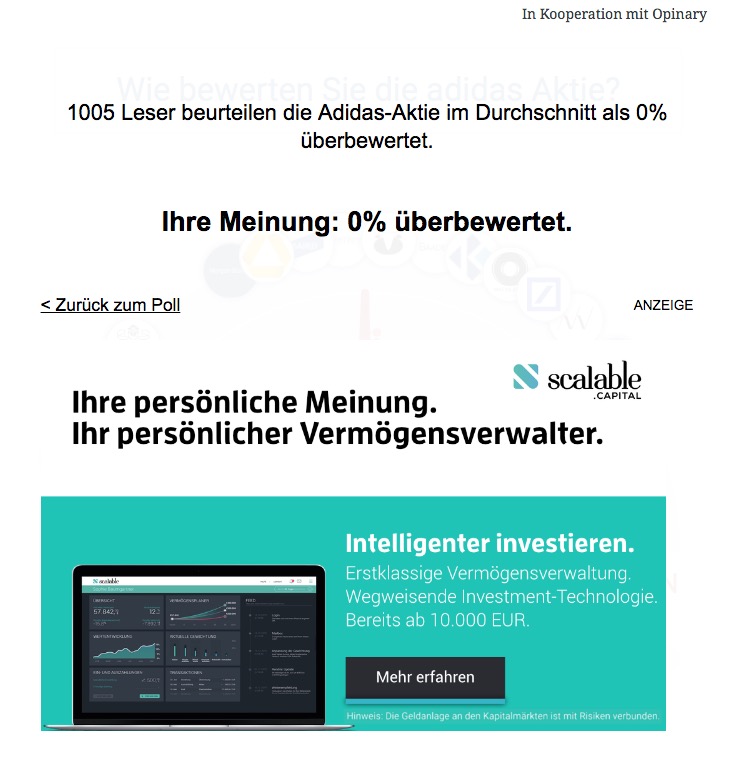
Cornelius Frey had been living abroad for more than 10 years when he returned home to Germany for Christmas in 2012. Working for McKinsey & Co. in Nigeria, Frey stayed up to date on the news from Europe, and he was frustrated by how difficult he found it to gauge popular opinion on various topics that were in the headlines.
Pia Frey, Cornelius’s sister, was a German-based journalist and product manager and, like many in the news business, was unhappy with the state of traditional comments. “I was deeply irritated by this dysfunctional relationship between editors, newsrooms, and their users. Editors just say to each other: Never read the comments,” Pia told me.
Out of those discussions grew what would ultimately become Opinary, the Berlin-based startup the Frey siblings co-founded, which provides publishers with interactive embeddable tools that measure user opinion. Max Meran is the company’s third co-founder and the head of partnerships. Cornelius is Opinary’s CEO, and Pia is an advisor who works with publishers.
The startup initially launched as a side project in 2013 with the name Pressekompass, which was also the name of its first product. In Opinary’s early days, Pia was a student in the Axel Springer Akademie, the publisher’s training program. She then moved into a product development role for Axel Springer’s Die Welt newspaper, which was also an early adopter of Pressekompass and Opinary’s other tools.
As part of her job at Die Welt, Pia spent the summer of 2015 in the Bay Area working at Ozy, which Axel Springer has invested in, to learn more about audience engagement strategies.
“This was the first help I got from them: that they let me do it,” she said. “Then, they not only let me do it, but they massively supported us by building cooperations and thinking together: How can we use your tools?”
The company changed its name to Opinary this past January because it was introducing additional tools beyond the original compass interface. The founders also wanted a name that was more palatable to an American audience as the company plots its U.S. expansion.
Since it launched, Opinary’s goal has been to let users easily share their views in the context of what others are saying about a particular issue while also orienting them to ongoing discussions of the topic. Its pitch to publishers is that its tools provide users with an interactive way to share thoughts without having to deal with the hassle of traditional comment moderation.
The original tool, Pressekompass (“press compass”), illustrates different aspects of an issue — such as whether a right-wing party could win the recent Austrian elections — around the sides of a compass and then plots the positions of various commentators and analysts based on their position. Readers can place their own marks on the compass, to show their positions compare to those of other users.

Opinary’s most popular tool now is Speedometer, which is similar to the Pressekompass, but lets users rate topics just on one axis. Users can place themselves on the Speedometer and see how their opinion changes the average, which is represented by the needle.

Opinary has introduced a number of different interfaces, including one that let users predict how stocks are going to perform, one that lets them place themselves on a political spectrum, and one that rates soccer players’ performances. And it’s in the process of developing other tools, including one for users to rate movies or TV shows.

Ten German newsrooms now use Opinary, and the company is looking to expand into the United States. Cornelius spent six weeks in the U.S. this spring meeting with investors and publishers. He said four American news organizations are going to start using the tools in the coming months, though he wouldn’t provide their names.
About 30 percent of readers typically use Opinary’s embedded tools on a page, Pia said, noting that engagement varies from site to site and topic to topic. She also works with newsrooms to share best practices so publishers can try to maximize engagement.
The site has a staff of 11, including an editorial team that creates graphics for publishers to embed on their sites based on the news of the day. About two-thirds of the content on Opinary is created by its own staff, and one third is created by publishers, using Opinary’s CMS.
Spiegel Online, the separate digital presence of the German news weekly Der Spiegel, was the first outlet to use Opinary. Matthias Streitz, Spiegel Online’s managing editor, said the site decided to begin using Pressekompass because it was able to aptly summarize how commentators and other outlets were covering issues while also allowing for easy user participation.
“It seem banal, but it’s a combination of elements that we didn’t have on the German market at the moment,” Streitz said. “It intuitively made sense when we saw it.” Spiegel uses Opinary’s interfaces in an average of 2.8 stories per day.
Cornelius said the early partnership with Spiegel was particularly helpful as the site offered feedback on the products’ design along with editorial suggestions.
In March, the company received its first outside investment of €1 million (USD $1.13 million). Opinary had been previously bootstrapped; Cornelius said the founders invested “no more than” €50,000 of their own money because the company began generating revenue when publishers started paying to use its tools.
The next step for Opinary is monetization. When the company launched, it charged publishers to use the tools, but now it’s transitioning to a revenue-share model in which publishers get a cut of any advertising that’s shown on their sites.
After a reader uses one of the tools, an ad that’s related to the content appears. For instance, if a reader uses Opinary to say they’re bullish about a stock, an ad for an online trading platform might pop up offering them the chance to actually buy that stock. Opinary also offers native content, letting a brand create its own interactive.

The other way Opinary is looking to make money is through market research and surveys. It’s working to develop mechanisms that could enable companies or campaigns to utilize the anonymized user data generated from its tools, along with additional questions about, for example, age and sex.
“Are we going to be the guys who are able to ask a 50-minute, 60-question survey catalog on a super detailed topic? No,” Cornelius said. “But we can bring a broad, relevant, interesting panel to a brand organization very rapidly, because we already talk to millions of people every day.”
“Once they integrate ads into the tool, we’ll share the revenue, but at the moment, it doesn’t work yet,” Spiegel Online’s Streitz said. “That’s maybe the large question mark dangling over this project: Will they succeed in monetizing it? I like the idea in principle, I like the people we work with, but still, I haven’t seen it work at the moment.”
That’s, obviously, a key question. As demand from publishers has increased, Opinary’s founders realized it was untenable to run the company as a side or part-time gig. Pia left Die Welt and Cornelius quit his job and moved back to Germany last fall. Meran, who was working for McKinsey in South Africa, came back to Germany as well.
“Opinary grew very quickly in terms of reach and potential for publishers and interest from investors and brands,” Pia said. “It’s my baby. I could find someone who raises this baby instead of me, or I could do it myself. Finding someone else [to do it] was not an option for me.”
Jan-Eric Peters, who now leads Upday, the joint Axel Springer-Samsung mobile product, led the Axel Springer Akademie and was then Pia’s boss at Die Welt. He said he let her pursue the startup while working at the paper because digital innovation is important for legacy outlets.
“Some people might say that it is a pity that Pia left the WELT after we put so much effort in her,” he told me in an email. “I have a different view. We need people in our industry who help (traditional) media to perform better in the digital age.”